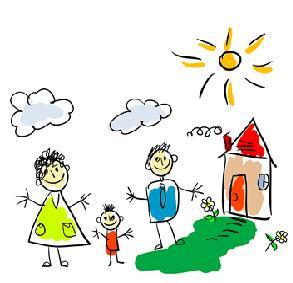
INVISIBLE DEADLY KILLERS AMONGST US!
Carbon Monoxide Can Kill!

A few years ago, a family of 5, in our area, moved into their brand new home. The family probably felt nauseous that evening, but retired to their bedrooms anyway.
The following morning only one member of the family, the father, emerged from the home alive! Four members of the family, the wife, the mother-in-law, and 2 children went to sleep, and never regained consciousness.
The investigation revealed that the roofers, who had been there the day before doing some last minute repairs, had placed a box of nails on top of the flue. The weight of the nails crushed the flue termination, not allowing the gas-fired appliances inside to vent properly.
Carbon monoxide filled the home throughout the night with deadly consequences.
The father, who survived, lives his life today with massive brain damage.
This story is an extreme example of carbon monoxide poisoning. But it is a haunting reminder that there are dangers inherent in our homes. We need to be aware of these dangers, test for their presence, and take steps to ensure the safety and health of our families.
Carbon Monoxide
Carbon monoxide (CO) is a toxic gas, which is totally odorless, tasteless, and colorless.
To quote the Environmental Protection Agency, "Because carbon monoxide is impossible to see or smell the toxic fumes, it can kill you before you are aware it is in your home."
Symptoms of CO Exposure
- disorientation
- nausea
- headache
- dizziness
- flu-like symptoms
- fatigue
- chest tightness
Depending upon a person's overall health, age, and the length and concentration of CO exposure, the effects can vary markedly from one person to another.
Where Does It Come From?
CO gas is formed from incomplete combustion of fuels, such as gasoline, natural gas, coal, and propane. Incomplete combustion occurs when not enough oxygen is available for clean burning of the fuel.
Age of an appliance, improper adjustment, worn components, or vent blockages can all contribute to CO in the home. Furnaces, water heaters, stoves, gas dryers, or fireplaces can all be suspect as CO producers, and should be inspected regularly for proper, clean combustion.
The best defense against this indiscriminate killer is a CO detector.
CO detectors range from battery powered units to plug-in units to hard-wired units, with battery back-up. They can be equipped with an audible alarm or a visual indicator, which changes color.
Steps you can take to ensure your family's well-being:
- Service your fuel-burning appliances regularly, before there is a problem.
- Inspect your appliance vents, and vent terminations, for proper flow and free of obstructions. (birds can build nests inside an open termination)
- Make sure your mechanical rooms are supplied with the properly sized combustion air intakes.
- Equip your home with CO detectors, preferably professionally installed.
Following the above steps will help ensure your family's continued good health, and that your home should never have a CO problem.
www.qualifiedhardware.com
has a great article on Carbon Monoxide poisoning and lists dozens of other informative resources about this danger in our homes.
Another great source for information about "Carbon Monoxide Safety" is
www.qrcodesrealestate.us
. Thank you to Amy and Ryan for passing this link along to us!
Click here to visit the EPA's Carbon Monoxide information page
Return to Forced Air Furnaces page
Return to Indoor Air Quality page
Depart our CO page and return to Home

Please feel free to link to this page from your website. This page's URL is: http://www.perfect-home-hvac-design.com/carbon-monoxide.html
Enjoy this page? Please pay it forward. Here's how...
Would you prefer to share this page with others by linking to it?
- Click on the HTML link code below.
- Copy and paste it, adding a note of your own, into your blog, a Web page, forums, a blog comment,
your Facebook account, or anywhere that someone would find this page valuable.